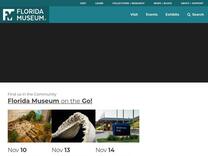Vertebrate Paleontology – Page 2 – Research News https://www.floridamuseum.ufl.edu/science/tag/vertebrate-paleontology/page/2/
from the Florida Museum of Natural History
Eleutherodactylus glandulifer), which once went 20 years… Read More About five and a half million

